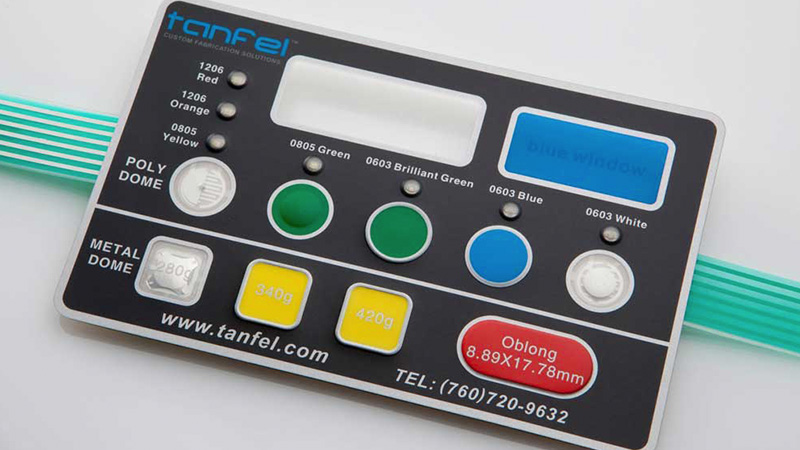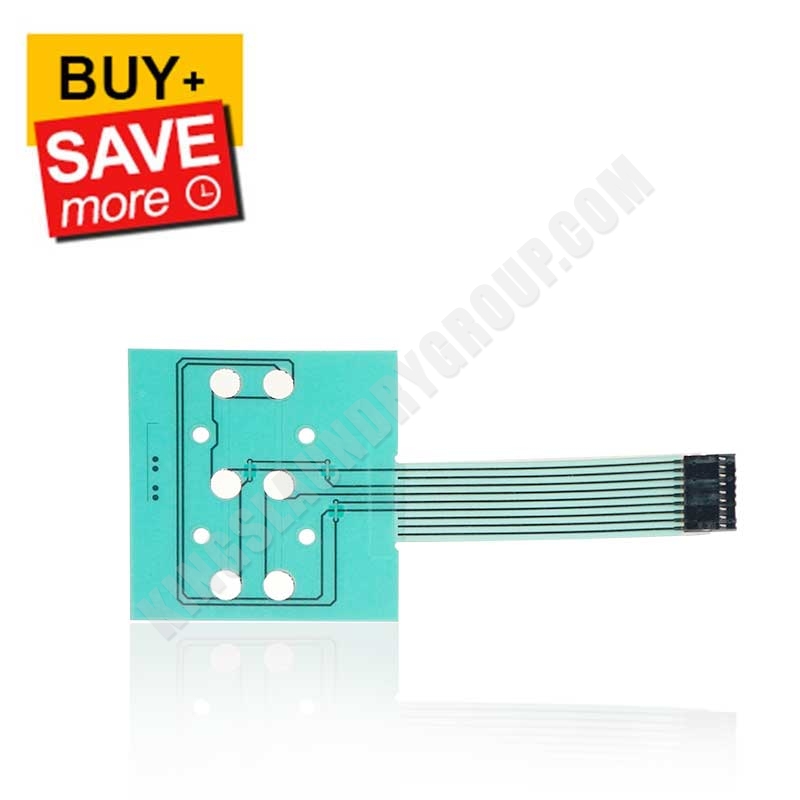Membrane Switches: A Cost-Effective Solution for Advanced Control Systems
Membrane Layer Switch Innovation: The Trick to Trustworthy and Economical Interfaces
Membrane button innovation has arised as a critical component in the layout of customer interfaces, offering both reliability and cost-effectiveness across a varied variety of applications. Its durable construction makes sure resistance to environmental difficulties, while the versatility in style permits tailored remedies that meet details sector requirements. As we discover the multifaceted advantages of membrane layer switches, their capacity for technology questions about future applications and advancing fads. What does the following chapter hold for this technology in a significantly electronic landscape?
Comprehending Membrane Switch Innovation
Membrane button innovation is an extensively made use of interface service in numerous electronic devices, offering a seamless mix of performance and layout. This innovation includes several layers of materials, typically being composed of a graphic overlay, spacer layer, and a circuit layer. The visuals overlay shows the interface elements, while the spacer layer divides the circuit layer from the overlay till a customer turns on a button.
When pressure is put on the overlay, the circuit layer completes the electrical circuit, sending out a signal to the device. This system permits for various setups, including responsive responses and backlighting alternatives, boosting user interaction. Membrane layer buttons are typically produced utilizing long lasting products such as polyester or polycarbonate, guaranteeing long life and resistance to ecological elements like moisture and dirt.
The flexibility of membrane layer switches allows their application in varied markets, including clinical devices, customer electronics, and industrial controls. Their small layout enables assimilation into space-constrained environments, supplying an effective user interface without endangering aesthetic charm. Recognizing the complexities of membrane switch modern technology is crucial for manufacturers and designers looking for to create trusted and efficient human-machine user interfaces.
Trick Advantages of Membrane Layer Switches
While different interface remedies exist, membrane changes deal distinctive advantages that make them a preferred selection in many applications. One of the primary benefits is their resilience; membrane buttons are developed to withstand severe ecological conditions, including wetness, dust, and temperature fluctuations, guaranteeing long-lasting performance. This strength substantially minimizes the demand for constant substitutes, thus lowering total upkeep costs.

Additionally, membrane buttons are lightweight and compact, making them suitable for applications where area is restricted. Their inconspicuous layout adds to a sleek look without jeopardizing capability.
Cost-effectiveness is also a remarkable benefit, as the production process for membrane layer switches has a tendency to be cheaper compared to standard mechanical buttons. This affordability, combined with their integrity and ease of installment, positions membrane changes as a practical service for a variety of industries looking for reliable and effective interface.
Applications Throughout Different Industries
Just how do membrane buttons adjust to the diverse needs of various industries? Membrane button technology is increasingly identified for its adaptability, making it suitable for a vast range of applications throughout multiple fields.
In consumer electronics, membrane layer switches give a the original source small service for push-button controls and home devices, boosting customer experience via user-friendly style. In addition, the industrial sector leverages membrane layer buttons for equipment control board, benefiting from their resistance to rough atmospheres, such as wetness and dust.
Armed forces and aerospace applications additionally make use of membrane buttons for their dependability and capability to withstand severe conditions, making sure operational performance in vital scenarios. The food and drink market takes on these buttons for automated systems, where hygiene and convenience of operation are paramount (membrane switch). Ultimately, membrane switches are customized to meet the one-of-a-kind demands of each sector, showing their necessary duty in modern innovation interfaces
Style and Modification Alternatives

In the realm of membrane layer switch modern technology, style and customization choices play a pivotal role in boosting capability and user communication. These switches can be tailored to fulfill details operational requirements and aesthetic choices, making them functional components in numerous applications.
Among the main personalization choices is the format of the switch itself, which can be designed to suit distinct interface and ergonomic considerations. By changing the shape, size, and plan of buttons, producers can develop instinctive layouts that help with simplicity of usage. Furthermore, the incorporation of different shades and visuals overlays permits for branding and improved exposure, guaranteeing that users can rapidly recognize functions.
In addition, membrane switches can be crafted with numerous tactile comments mechanisms, such as elevated buttons or distinct clicks, to improve the user experience. Various products can likewise be picked for resilience and ecological resistance, dealing with elements such as dampness, temperature level variations, and chemical direct exposure.
Ultimately, the substantial straight from the source design and modification choices available in membrane layer button innovation equip organizations to develop customized options that not just meet practical needs but additionally align with their branding and operational requirements.

Future Trends in Membrane Buttons
As membrane layer switch technology proceeds to develop, future trends are progressively concentrated on boosting individual experience and incorporating innovative performances. One significant fad is the integration of touch-sensitive and capacitive modern technologies into standard membrane layer switches. This growth permits more intuitive interface, providing tactile feedback while keeping a streamlined layout.
An additional arising trend is using eco-friendly products, driven by the growing demand for sustainable production practices. Makers are seeking to reduce their carbon impact by using recyclable substratums and low-impact inks, aligning with global sustainability objectives.
Furthermore, the surge of the Net of Things (IoT) is motivating the unification of wise attributes right into membrane buttons. Improved connection options will enable tools to communicate with each other, enabling for smooth assimilation right into wider systems.
Additionally, navigate to this site advancements in printing technologies, such as digital printing, are enabling greater layout versatility and personalization. This enables producers to create detailed styles and vibrant colors cost-effectively.

Verdict
Finally, membrane switch innovation stands for an essential innovation in interface style, supplying considerable advantages in longevity, customization, and cost-effectiveness. Its extensive applicability across diverse industries underscores its value in contemporary innovation. As developments proceed to arise, especially in touch-sensitive interfaces and sustainable products, the potential for membrane switches to improve individual experience and performance remains promising. Proceeded expedition of this innovation will likely yield better improvements and widen its scope in future applications.